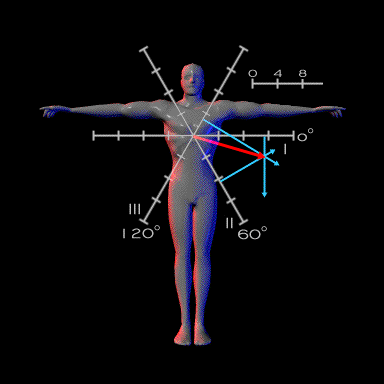
A line from the origin of the triaxial system to this point of confluence will define an angle, which in this case is +15°. This angle is defined as the main electrical vector or axis for the QRS complex.
Similar directional vectors can be created for the P wave and the T wave.
